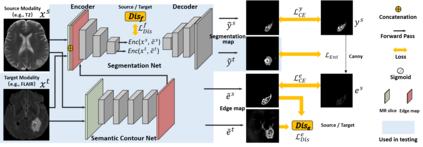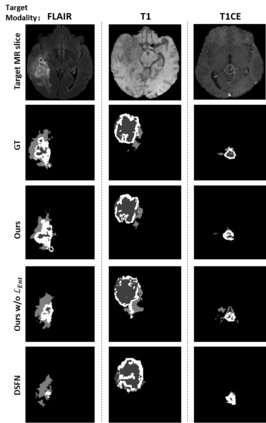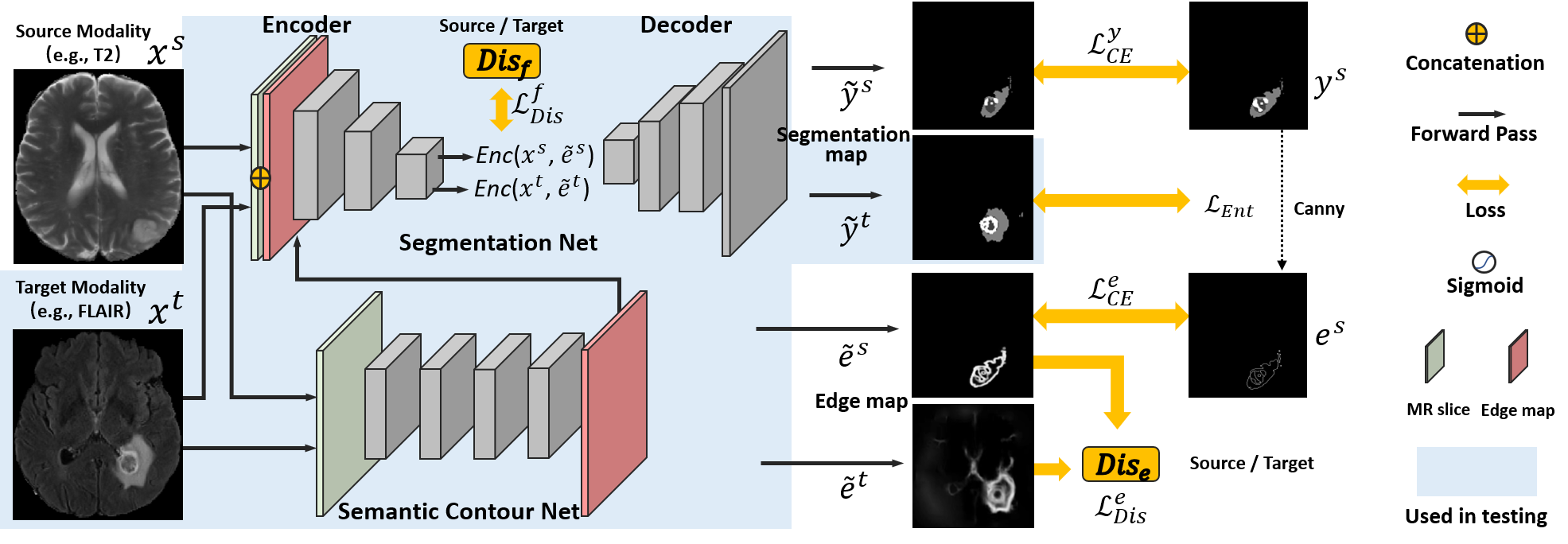Unsupervised domain adaptation (UDA) between two significantly disparate domains to learn high-level semantic alignment is a crucial yet challenging task.~To this end, in this work, we propose exploiting low-level edge information to facilitate the adaptation as a precursor task, which has a small cross-domain gap, compared with semantic segmentation.~The precise contour then provides spatial information to guide the semantic adaptation. More specifically, we propose a multi-task framework to learn a contouring adaptation network along with a semantic segmentation adaptation network, which takes both magnetic resonance imaging (MRI) slice and its initial edge map as input.~These two networks are jointly trained with source domain labels, and the feature and edge map level adversarial learning is carried out for cross-domain alignment. In addition, self-entropy minimization is incorporated to further enhance segmentation performance. We evaluated our framework on the BraTS2018 database for cross-modality segmentation of brain tumors, showing the validity and superiority of our approach, compared with competing methods.
翻译:~ 为此,在这项工作中,我们提议利用低层边缘信息促进适应,将其作为一项先质任务,与语义分离相比,该先导任务具有小的跨域差距。 ~ 精确的轮廓随后提供了空间信息,以指导语义适应。更具体地说,我们提议了一个多任务框架,以学习与语义分离适应网络的连接适应网络,同时学习语义分离适应网络,这一网络既采用磁共振成像(MRI)切片,又使用最初的边缘地图作为投入。~ 这两个网络与源域标签共同培训,为跨域校正对进行特征和边缘地图水平对抗性学习。此外,将自体机能最小化纳入进来,以进一步加强语义分离性能。我们评估了我们在BRATS2018数据库中用于脑肿瘤跨模式分离的框架,与相互竞争的方法相比,显示了我们的方法的有效性和优越性。







